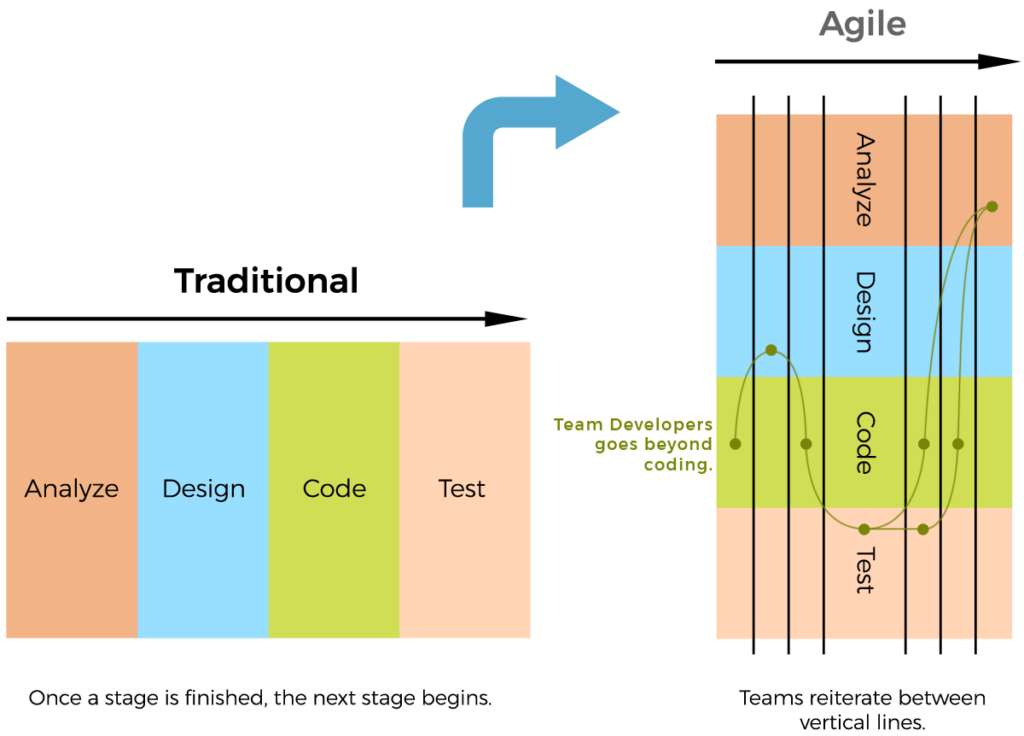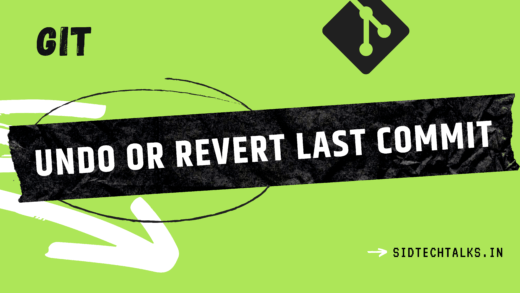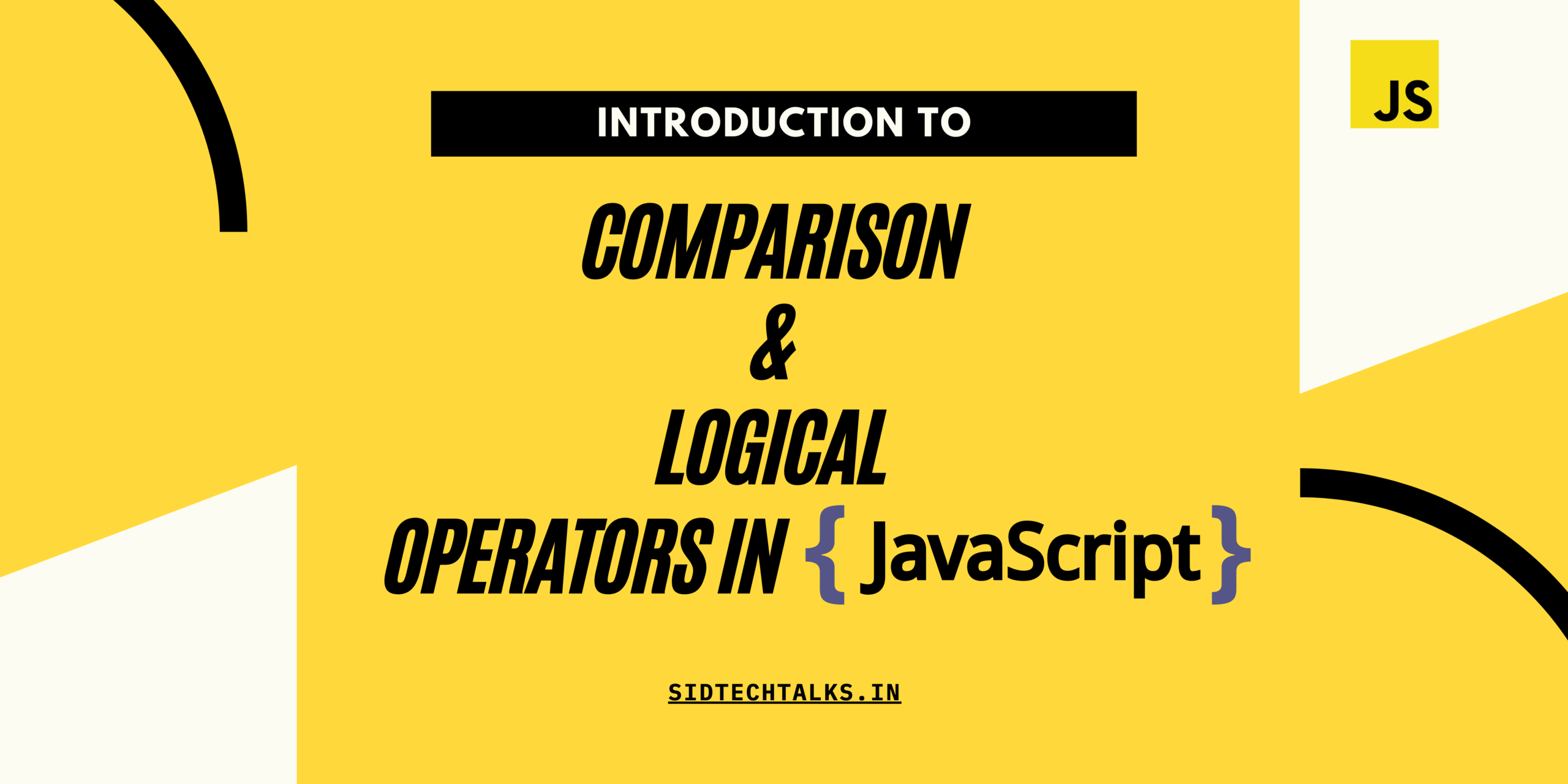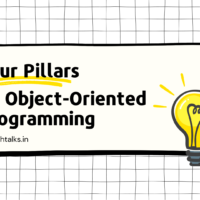In this article, we will explore the downside of using the traditional waterfall approach. We will discuss the key differences between Agile and waterfall (traditional method), the limitations of the waterfall methodology, and why organizations are transitioning to Agile for better and faster solutions.
In the world of project management, two well-known approaches have emerged: Agile and waterfall. While both are popular in the software development industry, they each have their own strengths and weaknesses.
Let’s begin and understand the traditional methodology first:
What is the Traditional Waterfall Methodology?
The traditional waterfall methodology is a linear approach to project management that emphasizes a sequential flow from the start to the completion of a project.
It follows step by step process by going from one phase to another phase in a sequential manner to complete it, it can’t go to the next move without completing the before one.
The waterfall methodology is best suited for projects where the desired outcome is clear from the beginning and there is little to no room for changes or flexibility.
The Limitations of the Waterfall Methodology
A significant downside of using the traditional waterfall approach lies in its inherent inflexibility and its potential to lead to project failures, delays, and inefficiencies. Here are the following downsides:
✅ Rigidity and Inflexibility
Waterfall is a highly structured, sequential approach where each phase of the project must be completed before moving on to the next.
This means that detailed planning and documentation must be done upfront. Any changes to requirements, scope, or design are often difficult and costly to implement once the project has started. This can be a major problem when working in dynamic environments or industries where requirements can change rapidly.
✅ Risk of Project Failure
If the initial requirements and planning are incomplete then there is a high risk that the project will not meet its objectives. Since the waterfall approach doesn’t provide opportunities for early user feedback or course correction.
✅ Late Discovery of Issues
Testing and validation typically occur in the later stages of the project, often after the entire development has been completed. This can lead to the late discovery of critical issues, bugs, or misunderstandings in requirements. By the time these issues are identified, significant work may need to be reworked, causing project delays and budget overruns.
✅ Resource Inefficiency
This typically requires resources to be allocated for the entire project duration. This can result in inefficiencies, as teams may be overutilized in the early phases and underutilized in the later phases of the project. It also makes it challenging to reallocate resources based on changing project priorities.
Why Organizations Are Transitioning to Agile?
Given the limitations of the traditional waterfall approach, many organizations are transitioning to Agile methodology for their projects. As I discussed Agile in the previous blog:
Agile works by breaking projects down into small tasks of user functionality called user stories, which can be prioritized according to the client’s demand and continuously delivering them in a short two weeks of cycles called Sprints (Iterations).

✅ Enhanced Client Involvement and Collaboration
Clients are actively engaged in the development process, providing feedback, reviewing working increments, and participating in regular project/scrum meetings.
This increased client involvement helps in better understanding and refining the project requirements, reducing the chances of misunderstandings or misalignment.
✅ Faster Delivery and Continuous Improvement
The Agile methodology promotes a culture of continuous improvement, where teams reflect on their work, identify areas for enhancement, and make adjustments accordingly. This iterative approach allows for quick feedback, enabling teams to learn from their mistakes, make necessary changes, and deliver higher-quality products.
Learn more: Designer vs Frontend vs Backend in Web Development
Conclusion
So, the traditional approach has more limitations than using it. The lack of adaptability, limited client involvement, and late discovery issues are some of the downsides of using the traditional waterfall approach.
To overcome these limitations, organizations are transitioning to Agile methodology, which offers greater flexibility, enhanced client collaboration, and faster delivery.

To achieve better project outcomes, you need to follow an Agile process that helps the client to synced and make the involvement in the project in a better way.
So, that is all about the downsides of the traditional approach and we have also learned how we can overcome this problem by using the Agile methodology. I have already discussed Agile in a separate article, you can check it out here below.
I hope you enjoyed the article and if you found this useful, then please share it with your friends and colleagues.
If you have any queries please feel free to post them in the comments section or anything that you wanted to ask through mail contact.
Happy Learning!
Also read,
- Understanding Agile Methodology in Project Management
- Designer vs Frontend vs Backend in Web Development
- [15] A complete guide list of Status Code in HTTP









